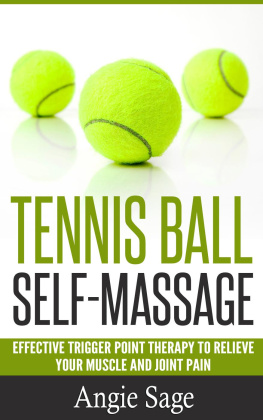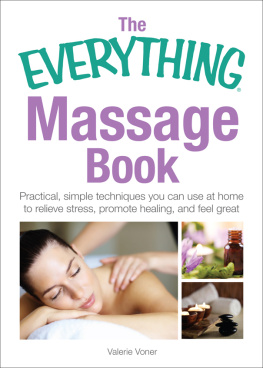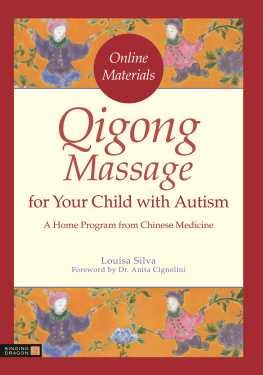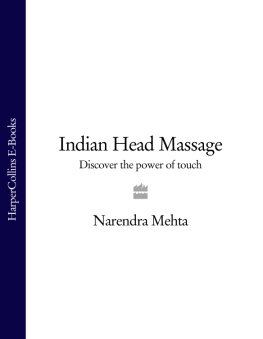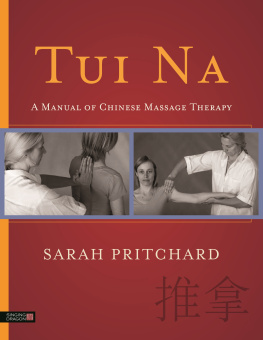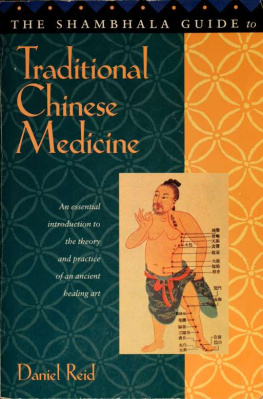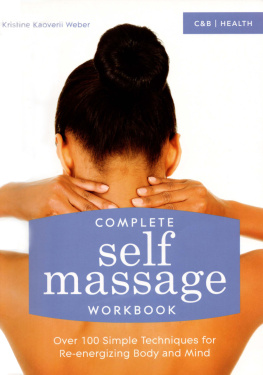"By massaging acupoints on the scalp and face, one can treat the entire body. The Head is the capital of the human body and is the confluence of all the Yin 6- Yang Meridians.
-The Yellow Emperor's Canon of Internal Medicine
(First Book on Chinese Medicine)
DR.WU'S HEAD MASSAGE
DR.WU'S
H EAD
MASSAGE
ANTI-AGING AND HOLISTIC
H EALING TH ERAPY
Dr. Bin Jiang Wu






Table of Contents
Vii
ix
xi
xiii
xvii
xix
PART 1. Wu's HEAD MASSAGE THEORY
Chapter 3
Chapter 11
PART 11. ACUPOINTS ON THE HEAD
Chapter 31
Chapter 37
PART 111. STIMULATION AREAS ON FACE AND HEAD
Chapter 45
Chapter 51
PART IV. WU'S HEAD MASSAGE
Chapter 59
Chapter 69
Chapter 101
PART V. PRACTITIONER'S SELF-CARE
Chapter 109
Chapter 119
APPENDIX. REFERENCES/SUGGESTED READINGS
About Acupuncture Naming Conventions
The author uses The National Certification Commission for Acupuncture and Oriental Medicine (NCCAOM) standards for naming acupoints throughout this book.

Dedication
This book is dedicated to my beloved parents and to those teachers whose guidance is indispensable to me.
Forward by Dr. Xue Tai Wan
Chinese medicinal massage, also called Tuina, has been around for a very long time. According to historical records, in the 7th century B.C. Bian Que, a renowned doctor in China integrated acupuncture, Tuina, and Chinese herbs to help save the dying Crown Prince. For over 2000 years since the Han Dynasty, The Yellow Emperor's Canon of Internal Medicine has established the principles of Chinese medicinal massage.
Chinese medicinal massage is a branch of Chinese medicine that is unlike western massage. The primary difference is that Chinese medicinal massage uses theories of channels and acupoints to achieve its goals. Massaging part of the body will enable the healing of the whole body. There is an emphasis on methods and techniques of manipulation that will not only relieve stress, but also fatigue. The ultimate purpose, however, is to enhance self-preservation and treat disease.
Head Massage is quite important in Chinese medicinal massage. According to Traditional Chinese Medicine, the head is the juncture of all six Yin and Yang Channels that are joined by two more significant channels the GV (Du) and CV (Ren). The brain becomes the ocean of marrow where all channels meet and are controlled and monitored. By massaging the head's acupoints, it stimulates Qi, and helps the circulation of Qi and blood. This improves the internal organs, and the body's functioning and overall health. According to western theory, the brain is the most sophisticated part of the body's nervous system. The central nervous system controls the brain, and activity is triggered in the brain cells. In head massage, this excitement is balanced through touch, thus improving not only the brain's circulation, but also the body's general health.
Dr. Wu earned his Masters Degree from the most prominent medical university in China-The China Academy of Traditional Chinese Medicine (Beijing). He specializes in acupuncture, Chinese medicinal massage, and Qigong. He has combined medical theory with his expertise and experience to develop a unique method of head massage focusing on the different head regions. Dr. Wu's innovations are significant not only to the Chinese medical profession, but to the general public as well. The publishing of this book will increase public awareness of this new development.
It is my privilege to recognize Dr. Wu's outstanding contribution to both medical knowledge and to our society.
-Dr. Xue Tai Wang March 24, 2000. Beijing, China
Dr. Xue Tai Wang is a world-renowned scientist in the fields of acupuncture and is the Past President of the World Federation ofAcupuncture Moxibustion Society
Preface
When I graduated from high school in 1972, I was caught up in the Chinese Cultural Revolution. All the universities were closed and graduating students were sent out to the country for further "labor training." I went back to my small hometown village in Hebai province to learn Chinese medicine with my uncle. One day I had the flu and my head was in severe pain. One old Chinese doctor in the medical clinic performed about 10 minutes of head massage on me, and immediately my headache was relieved. Right then I became an apprentice under the old doctor to study this massage form. His great-grandfather was an imperial doctor during the late Qing dynasty, and this head massage was handed down from the Imperial Palace. It was said that the Empress Dowager Chi Xi was especially fond of one eunuch named Small An because he would massage her, particularly on the head before she rose every morning.
In 1977 when the Cultural Revolution ended and University entrance resumed, I entered Heilongjiang TCM University and obtained my Bachelor of Medicine. In 1985, I entered the China Academy of Traditional Chinese Medicine in Beijing and obtained my Masters of Medicine (Qigong) in 1988. It was the first session of a Masters Degree of Medicine Qigong program in China and the world. During my studies in the university and the academy, I developed my fundamental theories based on the many ancient head massage literature I had looked up. Also included in the head massage techniques are many different folk therapies: Shaolin, Er-Mei, Qigong, and other Tuina techniques.
WHM is rooted in Traditional Chinese Medicine's basic theories of Yin/Yang, Five Elements, and the Meridian System. The basis of TCM is to activate and supplement the body's innate healing capacity to restore biological balance and harmony.
All medicine arises out of the need to avoid pain and keep illness and disability at bay, and to lead a healthy and full life.
With the progress of technology and widespread use of computers, we have seen an increasing number of people confined to the office. These so-called "office groups" constitute a large part of modern society. Computer programmers, secretaries, managers, accountants, doctors, lawyers, are just some of the typical white-collar professionals. Ironically, these "office groups" come to be the most susceptible victims of modern civilization.
For instance, the fast-paced stressful city life is related to irregularities of bowel movement, insomnia, and many more disorders. Instead of walking, we now use driving as a means of transportation. At work, we sit in front of the computer, and at home, we sit in front of the TV. Yes, modern inventions serve us well, but at the same time, a train of civilization-related illnesses, such as vertigo, irritability, headache, visual fatigue, heavy shoulders, and insomnia, flares up alongside the computer, the car, and the Internet.
The decreased physical exertion and increased neck, eye and brain activities reflect the dramatic revolution of the modern society from, say, a hundred years ago. A challenging question confronts us in the face of the rapidly changing society: Is there a natural approach to address the illnesses that are rooted in the modern civilization? The development of the Wu's Head Massage is the response to the call of the above problems.


